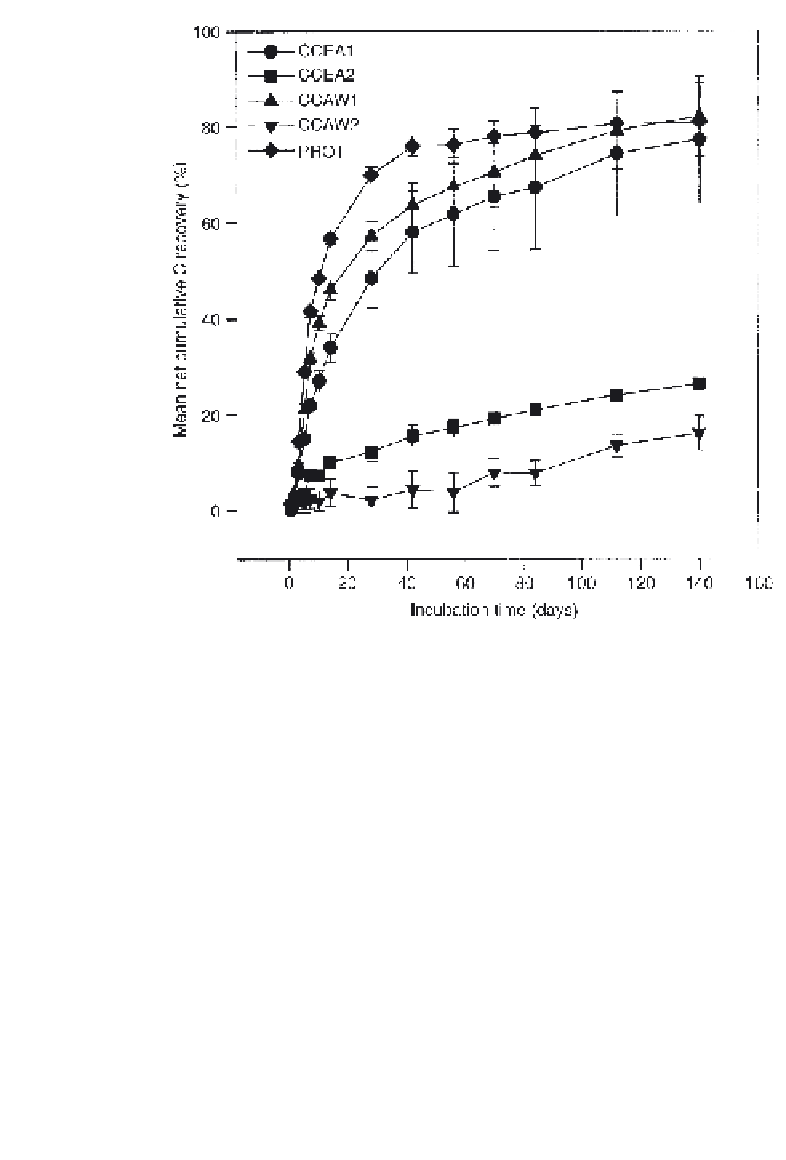Agriculture Reference
In-Depth Information
Fig. 3.3.
C decomposition from polyphenol-protein complexes from Calliandracalothyrsus(see
text for explanation of fractions) (adapted from Whetton, 1999).
within the first 6-8 weeks. Complexes formed by polyphenol fractions
which were more biologically active in binding proteins (fractions EA2 and
AW2) were considerably more recalcitrant. Complexes formed with high
molecular weight condensed tannin extracted from
C. calothyrsus
(AW2)
resulted in only 6% net recovery of C via microbial respiration, even after a
period of 16 weeks. Corresponding complexes using polyphenols from
either
Calliandra
or
Leucaena
showed similar decomposition patterns
(not shown). However, a specific
L. leucocephala
fraction (EA2) containing
condensed tannins, with molecular weights up to 1500-1600 Da, showed
an intermediate degree of recalcitrance, with a linear pattern of degradation
over the 16-week period, and a final net C recovery of 50-60%. Thus resis-
tance to microbial degradation of polyphenol-protein complexes in the soil
correlated well with their protein-binding or precipitation activity. While
some of these complexes had relatively short half-lives, others appeared to
be very recalcitrant to microbial attack and may provide a 'fast route' to
increase SOM contents.











Search WWH ::

Custom Search